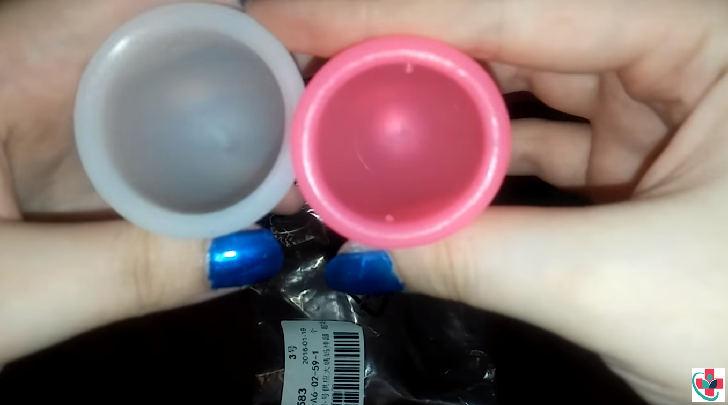Menstrual cups are a really great alternative to traditional pads and tampons. One, because it’s better for the environment. Two, because for a lot of people, you don’t feel like you’re wearing a diaper or having that product down there collecting odor.
A menstrual cup is a flexible, medical-grade silicone cup that’s inserted into your vagina during your period and collects menstrual fluid instead of absorbing it like tampons or pads. But how do they actually work?
Menstrual cups need to be folded so that it’s easier to insert. There are a lot of ways to fold a cup and you may need to try a couple different ones until you find the fold that’s right for you.
Many women find that sitting on the toilet with their legs apart is the easiest position to insert the cup, but others prefer to prop their leg up on the side of the toilet. Then you can use your fingers to push the cup into your vagina.
What happens once it’s inserted?
Once it’s inserted, this is approximately where your cup will sit in your vagina, but every woman’s body is different so cup placement can also be different. Some women wear their cups higher, some wear it lower – it all depends on what feels comfortable for you.
You’ll need to make sure that the cup unfolds and opens up just below your cervix, where it will collect your menstrual fluid. The cup is held in place by the muscular walls of the vagina and a gentle seal or vacuum forms between the cup and sides of the vagina, which prevents liquid from escaping. This is sometimes described as “suction”, and alongside leak prevention, it also helps keep the cup in position while you move around.
How do I take it out?
One of the best things about the cup is that you can leave it in for up to 12 hours. When it’s full or you want to empty it, all you have to do is squeeze the base of the cup to break the seal and then gently pull it out. Empty the blood into the toilet, rinse it off and then fold and reinsert it for another 12 hours of protection. If you’re in a public restroom without access to a private sink, you can just wipe it out with a piece of tissue or even take a bottle of water in the stall to rinse over the toilet. (It’s a good idea to give your cup a more thorough clean between your periods to maintain your intimate health and to prolong the life of your cup.)
Answers to Common Menstrual Cups Questions
Are menstrual cups safer than say sanitary napkins or tampons?
Ans: The safety of using menstrual cups depends on the user. The user has to make sure that the cup is cleaned well each time after use. It is suggested to clean the cup with warm water along with savlon or betadin.
The cups can sometimes cause discomfort as they are not watertight and airtight and have chances of leakage. These menstrual cups are not recommended for sexually inactive women.
What are the advantages of these cups?
Ans: Helpful for the busy bees and the one who has field visit job. One need not change for up to 8-10 hours. They are reusable hence cost-effective. Finally, they are more eco-friendly than others.
Remember that up to 3-5 years of usage is recommended due to hygiene factors. However, it should be cleaned thoroughly with Savlon after each use.
Should women switch over to these cups (from napkins and tampons)?
Ans: If they want they can switch to these cups. If not then different other options can be discussed. It is better for ladies with a heavier flow.
If someone is planning to switch to menstrual cups, options should always be discussed first with a doctor.
What are the things to bear in mind while switching to menstrual cups?
Ans: Women must remember that the correct technique should be learned to avoid slip and leakage. There is a myth that these cups make changes to the cervix, it is not true, they do not.
Also, women with cervical cancer should not use these cups and neither should those suffering from pelvic diseases, inflammatory diseases, endometriosis problems or infections. They should preferably use other methods.
Remember that although these menstrual cups are a bit expensive, they are easy to manage, reusable and can go a long way, especially when you’re traveling.

